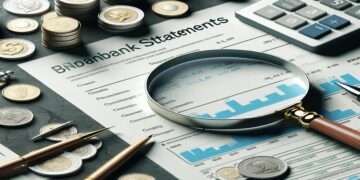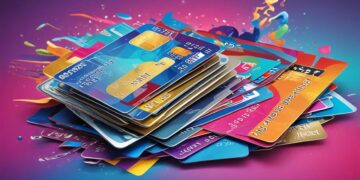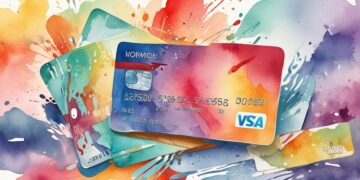How to Read and Interpret a Credit Card Statement

Understanding Your Credit Card Statement
Receiving your credit card statement can feel overwhelming, especially if you’re looking at a long list of transactions or complex financial terminology. However, mastering how to read it is crucial for effectively managing your finances and ensuring you stay on top of your spending habits. By taking a closer look at your statement, you’ll be better equipped to make informed financial decisions.
Why Understanding Your Statement is Important
Understanding your credit card statement is essential for several reasons:
- Track Your Spending: Your statement provides a detailed account of where your money goes each month. For example, if you notice repeated large transactions at a particular retailer, it may encourage you to evaluate your purchasing habits.
- Prevent Fraud: By carefully reviewing your statement, you can spot any unfamiliar transactions that could indicate unauthorized use of your card. If you see something suspicious, it’s crucial to report it to your bank immediately to prevent further charges.
- Manage Debt: Understanding your balances and interest rates helps you avoid overspending. If you know your limits, you can make smarter choices about how much you charge to your card or when to pay off part of your balance.
Key Components of Your Statement
Each statement contains several key components that you should familiarize yourself with:
- Payment Due Date: This is the date by which your minimum payment must be made to avoid late fees. If, for example, your payment is due on the 10th of each month, mark it in your calendar to ensure timely payments.
- Minimum Payment: This is the lowest amount you can pay and still remain in good standing. While it may be tempting to pay only this amount, doing so can result in accumulating interest on the remaining balance, leading to higher long-term costs.
- Transaction Details: Each transaction listed on your statement includes the date, amount, and merchant. Taking the time to review these details allows you to verify their accuracy and identify any errors or discrepancies.
By breaking down the statement into manageable sections, you can gain clarity and confidence in your financial decisions. Additionally, you may find it helpful to compare your statement to your budget to ensure you are aligning your spending with your financial goals. Understanding your credit card statement not only equips you to track your finances but also builds a foundation for good financial health moving forward.
Breaking Down the Statement
Now that you understand why grasping your credit card statement is essential, let’s delve into the specific components that you need to pay attention to the most. Each statement is typically divided into sections, making it easier to digest and comprehend the information presented. One of the first areas to look at is the account summary.
Account Summary Overview
The account summary provides a snapshot of your credit card usage for the billing period. Here are some key figures to consider:
- Current Balance: This is the total amount you owe on your credit card as of the statement date. Keeping track of this number helps you understand how much debt you are carrying each month.
- Credit Limit: This shows the maximum amount you can spend on the card. For instance, if your credit limit is $5,000, knowing how much you’ve used in relation to this limit can help prevent you from exceeding it, which could negatively impact your credit score.
- Available Credit: This is the difference between your credit limit and your current balance. It indicates how much you can still spend without going over your limit.
Statement Balance vs. Current Balance
Another key distinction to make is between the statement balance and the current balance. The statement balance reflects only the transactions made in the billing cycle that just ended, whereas the current balance includes all transactions up to the present moment. For example, if you receive a statement on March 1, it will show all charges up until February 28. If you then make a new purchase on March 2, that charge will not appear on the March statement, making your current balance higher than your statement balance.
Understanding Interest Charges
At the bottom of your statement, you will find detailed information about interest charges if you have not paid off your balance in full. Here’s what to examine:
- Annual Percentage Rate (APR): This is the yearly interest rate charged on your balance. Credit cards often have different APRs for purchases, cash advances, and balance transfers. Knowing your APR can help you understand how much extra you’re paying if you carry a balance.
- Interest Accrued: This shows how much interest you have accrued during the billing period. For instance, if your average daily balance was $1,000 and your APR is 20%, you can calculate the interest charged over that period.
By paying attention to these financial figures and concepts, you’ll be in a better position to interpret your credit card statement accurately. This understanding can lead to improved financial habits and decisions, empowering you to manage your finances more effectively.
Identifying Transactions and Fees
Once you’ve comprehended the account summary, it’s time to dive deeper into the transactions listed on your credit card statement. Understanding these line items is crucial, as they give you insight into your spending habits and any potential fees that may apply.
Transaction Details
Each transaction typically has several elements associated with it:
- Date: This indicates when the transaction occurred. By keeping track of dates, you can monitor your spending habits over time and potentially identify patterns in your purchases.
- Description: The description generally shows the merchant’s name alongside the location or, in some cases, the specific items purchased. Familiarizing yourself with the descriptions can help ensure that all charges are correct and authorized.
- Amount: This is the total cost for each transaction. It’s essential to verify that every amount matches up with what you expected to be charged.
Regularly reviewing your transactions helps provide clarity on your financing and highlights any discrepancies that may arise. If you notice any unfamiliar charges, taking action immediately can prevent further issues or fraudulent activity on your account.
Annual Fees and Other Charges
Another essential component of your statement is the annual fee, which some credit cards charge for the privilege of using them. While not all credit cards come with this fee, if yours does, it will appear prominently on your statement. It’s important to determine if the benefits offered by your card outweigh this cost.
Alongside annual fees, there may be other charges that could affect your balance:
- Late Fees: If you miss a payment due date, a late fee may be assessed. This fee can vary depending on your credit issuer, but it usually adds unnecessary financial strain.
- Foreign Transaction Fees: If you use your card overseas, some credit cards may charge a fee for foreign transactions, typically around 3%. Being aware of these fees helps you budget better if you’re planning to travel.
- Cash Advance Fees: Taking out cash using your credit card can incur fees and a higher interest rate version of your APR. Understanding these fees can deter you from unnecessary cash advances.
Minimum Payment Due
Your statement also specifies the minimum payment due, which is the smallest amount you can pay to keep the account in good standing. While it can be tempting to only pay this amount, doing so can significantly prolong your debt due to interest accrual. If feasible, try to pay more than this minimum to reduce your overall balance faster and enhance your credit score.
In summary, mapping out all your transactions, fees, and required payments will pave the way for a thorough understanding of your credit card statement. By regularly assessing these details, you’ll improve your budgeting skills and develop a more comprehensive view of your financial health.
Final Thoughts on Understanding Your Credit Card Statement
Understanding your credit card statement is an essential step in managing your finances effectively. By taking the time to review your transactions, identify any fees, and grasp the implications of your minimum payment due, you can make informed decisions that align with your financial goals. Regularly scrutinising your statement empowers you to identify spending patterns, spot any irregularities, and avoid the pitfalls of unnecessary debt.
Moreover, it allows you to leverage the benefits of your credit card while minimising additional costs. For example, if you discover a recurring charge for a service you no longer use, addressing it can free up funds for more meaningful expenses. Additionally, comprehending the impact of fees, such as annual or foreign transaction fees, can be pivotal when assessing whether a specific card is right for you.
Ultimately, becoming proficient at reading your credit card statement is a foundational skill in financial literacy. By actively engaging with your financial documents, you cultivate a clearer perspective on your overall financial health. Remember, keeping track of your spending not only aids in creating a sustainable budget but also positions you to protect your credit score—the key to financial success in future credit applications. Take charge of your financial journey, and turn your credit card statement into a tool that enhances your financial well-being.

Linda Carter is a writer and financial expert specializing in personal finance and financial planning. With extensive experience helping individuals achieve financial stability and make informed decisions, Linda shares her knowledge on the Take Care Garden platform. Her goal is to empower readers with practical advice and strategies for financial success.





